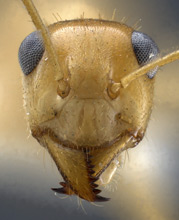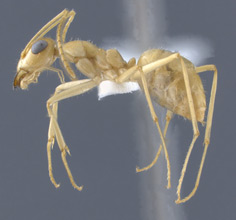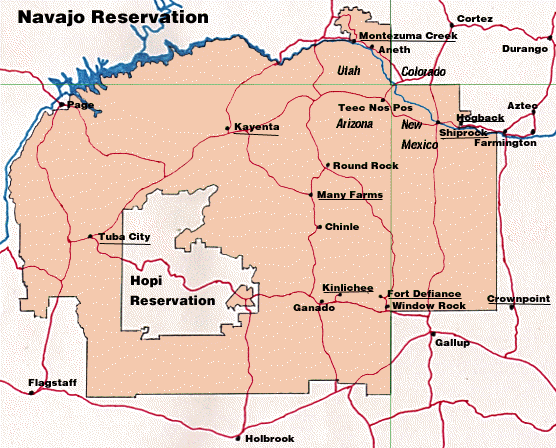- Identification
- The genus Myrmecocystus can be differentiated from other Nearctic Formicinae by their elongate maxillary palpi. The fourth segment is as long as, or longer than, the combined lengths of the two following segments. This species is most similar to Myrmecocystus mexicanus but differs in its large eyes being situated closer to the top border edge of the head (when viewed in full face view). Myrmecocystus navajo also have slightly smaller workers and a reduced range of worker size variation within a colony than its most similar congener.
- Biology
- Foraging is nocturnal and workers collect honeydew from aphids and pseudococcids, as well as imbibing plant nectars. Dead arthropods are also an important part of their diet. Repletes are not always present in colonies of this species. The worker force of a mature colony is estimated to be more than 1,000 individuals. The range of workers sizes in in Myrmecocystus navajo is not as variable as seen in many other polymophic Myrmecocystus and the workers are, on average, smaller than other congeners on the Navajo Reservation.
- additional biology notes...
- Distribution
- Range
- United States. Eastern Colorado south to western Texas, westward to southern Utah, Nevada, California and northern Sonora.
- Navajo Reservation Records
- Collection records being processed.
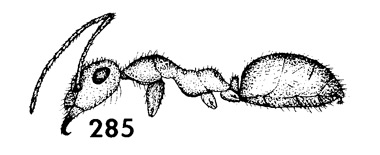
Drawing of worker from Snelling (1976)
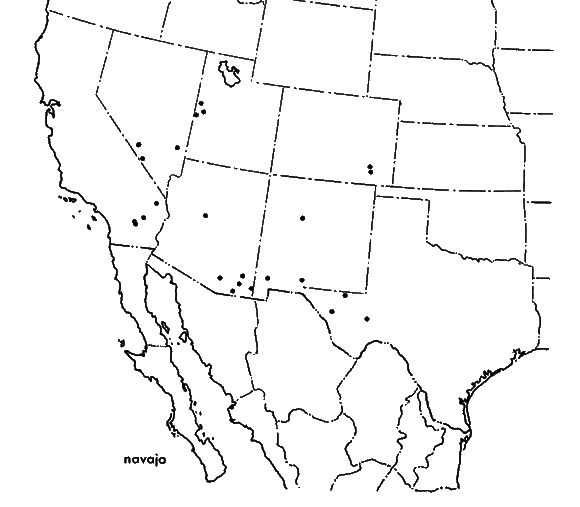
- Additional Notes (based on Snelling 1976)
- Nesting
- Ground nesting. Colony entrances are typically topped by crater shaped mounds composed of coarse grains of sand or fine pebbles.
- Habitat
- Ranging from Creosote bush Scrub in the Lower Sonoran to Upper Sonoran Chaparral; common in Oak-Juniper and Pinon-Juniper Woodlands. The elevational range of navajo is poorly known: in New Mexico it ranges from 4000' to 6100'; in Nevada from 2200' to 6500' and in California from about 700' to 4500'. West of central Arizona the distribution is sporadic, probably limited to suitable habitat elevations in the mountain ranges.
- Repletes
- Myrmecocystus are better known to naturalists by their common name - honeypot ants. While there are numerous varieties of honeypot ants throughout the world this particular genus is restricted to dry habitats in southwestern North America. Individual species can be found from Washington, south to central Mexico and east to Texas. The genus is most diverse in southern California, which hosts eighteen of the twenty-seven named species. The common name of the ants from this genus highlights an unusual feature of their biology. One of the worker castes serves as a living food storage repository. These large workers, or repletes, have gasters that are able to expand to a remarkable degree.
- Repletes are a fascinating adaptation to arid and semi-arid habitat life. Myrmecocystus live in areas where rain is sparse and typically arrives seasonally. The moisture triggers plant growth and reproduction, which in turn creates food resources for many other organisms. Carbohydrate rich exudates of sap sucking insects (aphids and others), galls and extrafloral nectories can readily be gathered in great quantities by foraging ants. Over the course of the year nothing else compares to this seasonally abundant profusion of liquid nutrients. Repletes are an effective way of solving the problem of dealing with the boom and bust nature of these valuable liquid food resources.
- Nests of Myrmecocystus go deep underground and the repletes are typically located in the lower reaches of the nest. Snelling (1976) felt they were placed where there is permanent soil moisture. This positioning of the repletes in the soil column allows for the ants to be kept cool and maintained in a humid environment. The deeper confines of the nest are also presumed to be safer from predators that could potentially prey upon the nutrient rich ants. Other ants, badgers, coyotes and even humans have exploited honeypot ants as a food resource.
- Foraging ants collect honeydew and nectar, return to the nest and regurgitate their food to the repletes. These living storage units suspend themselves from the ceiling of a nest chamber. Individuals are often found in clusters while overall they may be found in numerous chambers in a colony. Engorged individuals can become confined to the chamber where they become filled with liquid. The repletes of some species become the size of small grapes. The transfer of food is reversed during leaner times of the year. Workers will tap their antenna upon the head, mandibles and antenna of a replete to solicit food, which is then readily provided to the repletes' nestmates.
- Etymology
- Commemorative. Named after the commonly used name for the Diné people.
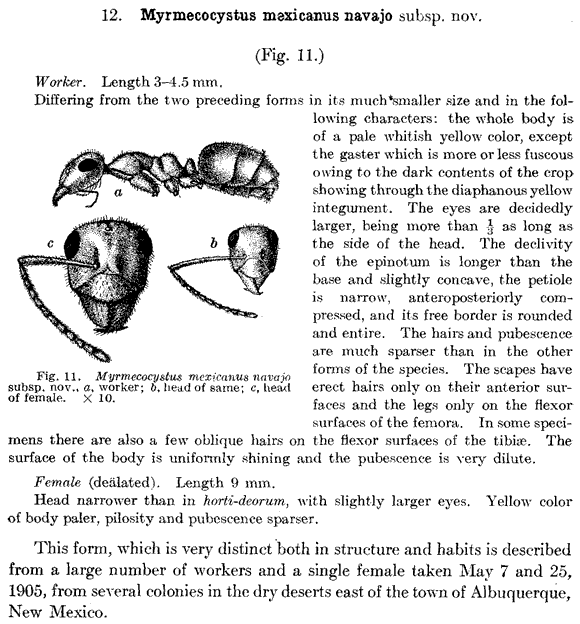

- Literature
- Snelling, R. R. 1976. A revision of the honey ants, genus Myrmecocystus (Hymenoptera: Formicidae). Natural History Museum Los Angeles County Science Bulletin. 24:1-163.
- Wheeler, W. M. 1908. Honey ants, with a revision of the American Myrmecocysti. Bulletin of the American Museum of Natural History. 24:345-397.
- A note about these publications. The literature cited here is not meant to be an exhaustive list of papers published about this species.
Page authored by David Lubertazzi and Gary Alpert
